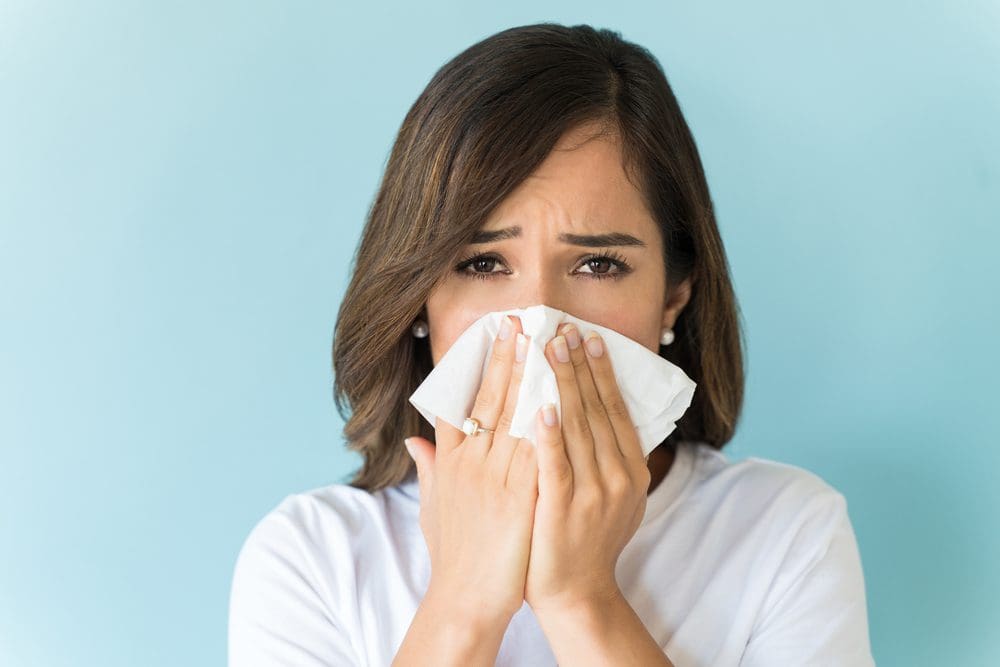Full Disclosure: Clicking on these links could mean a tiny commission for me, at no extra cost to you.
In a world where the pursuit of happiness often leads us down various paths, the simplest and perhaps most effective one might just be a jog around the block or a quick workout session at the gym. It’s well-documented that physical activity can significantly impact our mental health, thanks to the release of certain chemicals in the brain known as endorphins. These “feel-good” hormones are nature’s way of helping us deal with pain and stress, leading to a euphoric sensation often referred to as the “runner’s high.” But the relationship between exercise and endorphins goes beyond just feeling good momentarily; it’s a profound connection that can uplift our mood and enhance our overall well-being in surprising ways. In this article, we delve into the science behind this link, exploring how regular physical activity can be a powerful tool in boosting mental health and happiness.
Best Types of Exercise for Endorphins
- Best for strength training: Dragon Door
- Best for yoga: Yoga Download, Yoga Burn
- Best for tai chi: Qigong Power Training System
- Best for dancing: Belly Dancing Course
What Are Endorphins?
Before we lace up our sneakers and hit the track, let’s take a moment to understand what endorphins are and why they play such a crucial role in our well-being. Endorphins are neurotransmitters produced by the central nervous system and the pituitary gland. Often dubbed the body’s natural painkillers, they are part of the body’s pain and pleasure circuit, triggered by physical discomfort, stress, and even the consumption of certain foods. When released, endorphins bind to receptors in the brain that reduce our perception of pain, similar to how drugs like morphine work, but without the risk of addiction or overdose. Moreover, endorphins contribute to a feeling of euphoria, boosting our mood and providing a sense of well-being.
The Science Behind Endorphin Release
The process of endorphin release is fascinating and multi-faceted. It’s not merely about the physical exertion but the body’s response to stress and pain. When we engage in physical activities, especially those that push our limits, the body perceives this as a stress signal. In response, it pumps out endorphins to help mitigate the discomfort and pain. This doesn’t mean one has to engage in extreme sports or exhaustive workouts to experience this bliss; moderate exercises that elevate the heart rate can also trigger a significant endorphin release. This mechanism underscores the importance of exercise not just for physical fitness but as a natural, accessible means to manage stress and foster a happier state of mind.
Taking Advantage of Exercise and Endorphins
Exercise isn’t just about building muscles or shedding extra pounds; it’s a trigger for a chemical rush in the brain that plays a key role in our emotional and mental health. The relationship between physical activity and the release of endorphins is a essential for keeping your mind and mood healthy, acting as nature’s natural mood lifter.
Let’s explore how different types of exercise can unlock this flood of feel-good hormones and the science that supports this transformative power.
1. Aerobic Exercises: Running, Swimming, and Cycling
Aerobic exercises are often hailed as the most effective way to trigger endorphin release. Activities such as running, swimming, and cycling elevate your heart rate and breathing, promoting the circulation of oxygen throughout your body. This type of physical stress activates the release of endorphins, leading to the well-known “runner’s high” – a feeling of euphoria coupled with a reduction in pain and anxiety. Studies have shown that regular aerobic exercise increases the levels of these neurotransmitters in the brain, contributing to improved mood and reduced symptoms of depression and anxiety over time.
2. Strength Training and High-Intensity Interval Training (HIIT)
While aerobic exercises are excellent for endorphin release, they’re not the only players in the game. Strength training and HIIT have also been shown to have significant mood-boosting effects. These forms of exercise stimulate endorphin release by challenging muscle groups, creating a different kind of physical stress that the body responds to by releasing endorphins. Moreover, the sense of accomplishment and progress inherent in strength training and HIIT can further enhance mood and self-esteem, illustrating how diverse forms of exercise contribute to mental wellness in multifaceted ways.
3. Yoga
Yoga is an ancient practice known for its effective approach to physical, mental and emotional well-being. It stimulates endorphin release through a blend of physical postures, breathing techniques, and meditation. Unlike the immediate surge of endorphins triggered by high-intensity workouts, yoga offers a more subtle yet powerful path to euphoria and happiness. Its benefits extend beyond the mood-enhancing effects of endorphins, improving symptoms of depression, anxiety, and stress, while also enhancing physical strength, flexibility, and cardiovascular health.
Regular yoga practice promotes deep relaxation, stress relief and a sense of inner peace. It’s no surprise it’s a popular tool for promoting mental, physical, and emotional well-being. Whether through vigorous sequences like Vinyasa or gentler forms such as Hatha, incorporating these types of yoga into your wellness routine can significantly uplift your mood and overall health.
Get Started Today: Yoga Download
4. Tai Chi
5. Outdoor Activities
7. Team Sports
8. Martial Arts
9. Boxing
Maximizing Exercise and Endorphins
Knowing that exercise can boost endorphins is one thing; integrating it into your daily life to reap the mood-enhancing benefits is another. Consistency is key. Regular engagement in physical activities ensures a steady stream of endorphin release, contributing to long-term improvements in mood and emotional resilience. Here are some strategies to help you get the most out of your workouts:
- Regularity and Consistency: Aim for at least 150 minutes of moderate aerobic activity or 75 minutes of vigorous activity each week, as recommended by health authorities. Consistency in your exercise routine ensures a continuous flow of endorphins.
- Combine Various Forms of Exercise: Incorporate a mix of aerobic exercises, strength training, and flexibility routines into your weekly schedule. This variety not only prevents boredom but also maximizes the endorphin release by engaging different muscle groups and types of physical stress.
- Tips for Beginners: Starting an exercise routine can be daunting. Begin with small, achievable goals, like a 10-minute walk each day, gradually increasing the duration and intensity as you become more comfortable. Remember, the goal is to find joy in movement, which in turn will help unlock the endorphin-driven mood boost.
Incorporating these activities into your regular routine can help you experience the mood-boosting benefits of increased endorphin levels while improving your overall physical and mental well-being.
Moving forward from the transformative effects of exercise on mood through endorphin release, it’s important to recognize that the benefits of physical activity extend far beyond just the immediate mood boost. Exercise is a multifaceted tool for health, offering numerous benefits that contribute to long-term well-being.
Beyond Endorphins: Other Health Benefits of Exercise
While the endorphin release is a significant benefit, exercise’s role in promoting health and well-being doesn’t stop there. Regular physical activity is a cornerstone of a healthy lifestyle, contributing to physical, mental, and emotional health in a myriad of ways.
Improved Heart Health and Weight Management
Regular exercise strengthens the heart and improves circulation, reducing the risk of heart disease by lowering blood pressure and increasing HDL (good) cholesterol levels. Additionally, physical activity helps in weight management by burning calories, regulating metabolic rate, and improving muscle mass, all of which are crucial for maintaining a healthy weight and preventing obesity-related diseases.
Increased Energy Levels and Better Sleep
Engaging in regular physical activity can also lead to improved energy levels. Exercise stimulates the cardiovascular system, ensuring that oxygen and nutrients are efficiently distributed throughout the body, which enhances energy production and endurance. Furthermore, exercise is beneficial for sleep. It helps regulate the body’s internal clock, leading to deeper, more restorative sleep, and can also help alleviate symptoms of sleep disorders such as insomnia.
Enhanced Cognitive Function and Reduced Risk of Chronic Diseases
Exercise has been shown to stimulate brain health, improving cognitive functions such as memory, attention, and processing speed. It promotes neuroplasticity by stimulating the formation of new neuronal connections, which is essential for learning and memory. Additionally, regular physical activity reduces the risk of developing chronic diseases such as Type 2 diabetes, certain cancers, and Alzheimer’s disease, further underlining its role in maintaining overall health.
The Holistic Impact of Exercise on Well-being
The holistic benefits of exercise demonstrate that its impact on our lives goes far beyond physical appearance or temporary mood improvements. It’s a vital component of a healthy lifestyle that supports long-term health and well-being. By making exercise a regular part of our routine, we not only enhance our physical fitness but also invest in our mental and emotional health, laying the foundation for a happier, healthier life.
FAQs
Can exercise help with anxiety and depression? Yes, numerous studies have shown that regular exercise can significantly reduce the symptoms of anxiety and depression. The endorphin release during physical activity plays a key role in this process, alongside other mechanisms such as improved sleep and reduced stress levels.
How long do I need to exercise to feel the endorphin rush? The amount of time required to experience an endorphin rush can vary based on the individual and the intensity of the activity. Generally, moderate to high-intensity exercise for at least 30 minutes is often sufficient to trigger this response.
Are there exercises that are particularly effective for releasing endorphins? While all forms of exercise can stimulate endorphin release, aerobic activities like running, cycling, and swimming, as well as high-intensity interval training (HIIT) and strength training, are particularly effective.
How can I motivate myself to exercise regularly? Setting realistic goals, finding activities you enjoy, tracking your progress, and seeking social support can all help in building and maintaining motivation for regular exercise.
Can too much exercise reduce the effectiveness of endorphins? Like many things, balance is key. Overtraining can lead to physical and mental burnout, potentially dampening the positive effects of endorphins. Listening to your body and allowing for adequate rest and recovery is essential.
Conclusion
The relationship between exercise and endorphins opens up a fascinating window into the natural ways we can enhance our mood and overall well-being. As we’ve explored, the benefits of regular physical activity extend far beyond the immediate euphoria of an endorphin rush, touching every aspect of our health and life. By incorporating a variety of exercises into our routines, we can harness these benefits, leading to a happier, healthier, and more balanced existence. So, the next time you’re feeling down or stressed, remember that a quick workout could be just what you need to lift your spirits and boost your health.











